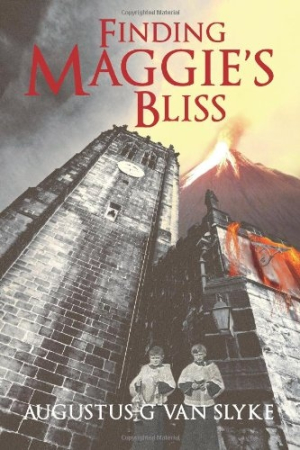Finding Maggie's Bliss
In no uncertain terms, Finding Maggie’s Bliss tells readers that it’s never the victim’s fault, and that abusers can be brought to justice.
In this follow-up to his psychological thriller, Digging Up Bones, Augustus Van Slyke combines grim realism and supernatural fantasy to illumine difficult themes like pedophilia and child trafficking. Finding Maggie’s Bliss follows the abused children from Van Slyke’s debut novel into middle age, where they confront memories so harsh they’ve been suppressed. Van Slyke lets those memories rise to the surface with a tale that has emotional resonance, even as its plot carries conspiracy theories to some extreme conclusions.
At the heart of things is Maggie Hornsby, the most carefully drawn, consistently voiced, and emotionally engaging character in the book. Estranged from her daughter, Bliss, and struggling with PTSD and an ovarian cancer diagnosis, the cantankerous Maggie goes on a retreat that only brings her closer to the very things she fears. She’s blunt, emotional, sometimes confused, but always open-minded, and her complexity is compelling. Yes, she hears voices, maybe even has imaginary friends—or are they angels?—but Van Slyke convincingly puts us in her head, where everything makes a certain sense.
There is a lot going on in Maggie’s world, and not all of it flows easily. The plot can feel like a grab bag of genres as it switches from Stephen King–like horror scenes to Maggie’s intimate talks with her caretaker, or from uncomfortably explicit memories of child abuse by clergy to underground caves in Hawaii that harbor an unbelievably complex and ruthless secret society. Perspective can shift abruptly, from victims to perpetrators, with little warning, leaving the reader a bit bewildered. The book tries for a sense of urgency, with devices like a running clock and calendar at the head of each chapter, but the constant scene-changing makes it difficult to build tension.
Scenes set in Maggie’s world—a retreat house—carry the most weight. From the creaking floorboards to the bathroom down the hall, Van Slyke draws a detailed picture of Maggie’s surroundings. When we catch up with her daughter, however, we’re entombed in sparsely described lava tubes beneath Hawaiian volcanoes. It’s an exotic locale, but not nearly as palpable as Maggie’s surroundings.
The book maintains an overall tone of menace that begs for resolution, from the dark cathedral towers looming over two altar boys on the cover to the ultimate revelations about a worldwide network of pedophiles and child traffickers. The conspiracy that is woven may be overblown, but Maggie’s role is sympathetic, and this may be enough to keep the pages turning as the plot twists become less and less believable.
An advocate for children’s rights—he’s a member of the Survivors Network of those Abused by Priests and PROTECT, a national child protection organization—Van Slyke puts forth a message in his fiction that will resonate with survivors of abuse. Finding Maggie’s Bliss tells readers in no uncertain terms that it’s never the victim’s fault, and that the abusers can be brought to justice.
Reviewed by
Sheila M. Trask
Disclosure: This article is not an endorsement, but a review. The publisher of this book provided free copies of the book and paid a small fee to have their book reviewed by a professional reviewer. Foreword Reviews and Clarion Reviews make no guarantee that the publisher will receive a positive review. Foreword Magazine, Inc. is disclosing this in accordance with the Federal Trade Commission’s 16 CFR, Part 255.

